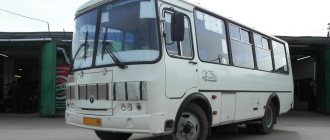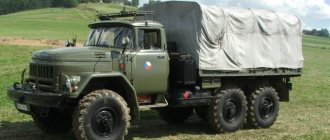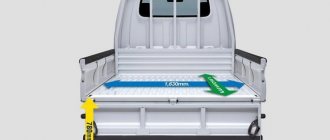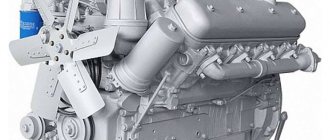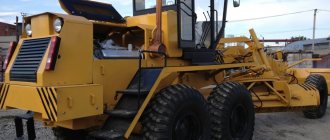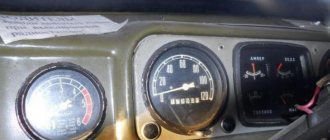For many decades, the Yaroslavl Motor Plant has been producing irreplaceable and unparalleled engines YaMZ 236 and YaMZ-238. Such popularity of motors is explained by their reliability and maximum maintainability. The units are installed on special equipment belonging to the class with a large load capacity. This includes MAZ, ZIL, agricultural machinery, Kamaz, etc. Over several decades, a large number of modifications of engines of this brand have been produced, so today they can be installed on both used and recently released vehicles.
Engine YaMZ 238 - Technical characteristics. Oil volume and fuel consumption
This YaMZ 238 turbo diesel engine, despite its outdated design and average technical performance, is quite widespread. Due to the fact that cars with this engine have been produced for a long time, there is still a great demand caused by reliability, high maintainability, and the wide distribution of spare parts for these engines. And in comparison with foreign analogues, YaMZ 238 engines are supplied at a low price. This is why YaMZ 238 engines are installed on new models of equipment. Currently, it has been modernized to comply with Euro-2, -3 standards, and the engine power has been increased to 400 hp.
The material from which the cylinder blocks of the YaMZ 238 engine are made is gray cast iron. The cylinder liners are also cast from special cast iron. The engine has two heads, one for each row. There is also a forged steel crankshaft with counterweights. There are also 4-5 crankshaft supports. The engine pistons are made of aluminum alloy. In total, the piston has three compression piston rings and two oil removable ones.
Retaining rings limit the axial movement of the floating piston pins. Also installed are forged steel connecting rods with an oblique lower head connector. To start the engine with a starter, a flywheel with a steel ring gear is used.
Stamped steel pull-out levers (4 pieces), mounted on needle bearings. Between the levers there is a subordinate ratio of 1:5.4. 28 pieces of cylindrical pressure springs twisted from steel wire are installed. The middle drive disk, cast from cast iron, is connected by spikes to the flywheel.
History of MAZ-64229 “Super”
Cars of the 6422 or SuperMAZ family were supposed to replace the trucks of the legendary 500 series. The designers were faced with the task of maintaining reliability and unpretentiousness, while at the same time bringing the car to international standards of comfort and safety. Both the structure and design have undergone modernization.
The first developments of the series began back in the 1970s, and in 1981 the first prototype was assembled. The project was a responsible one - MAZ represented the country on international roads, so the cars were modified many times. The basic model 6422 was produced from 1981 to 1985, then was once again revised. In 1987, the updated MAZ-64229 rolled off the assembly line - modern, comfortable and reliable cars. The technical characteristics of the MAZ 64229 ensured their wide popularity. Until now, trucks of this model carry out most of the domestic and international flights in the territory of the former USSR.
MAZ-64229 replaced the 500th modelMAZ-64229 was the first truck to meet Western standards in terms of convenience and appearance. Compared to previous generations of Soviet trucks, which provided drivers with barely a basic level of comfort, it was truly “European.” A sprung cabin, an adjustable driver's seat, two berths separated from the rest of the space by curtains, and an improved instrument panel made the driver's work much easier. The name “Super” quickly stuck to the series. Drivers used it, despite the fact that it was officially abandoned by the early 1990s.
Description of the car
MAZ-64229 is a three-axle truck tractor designed to work in a road train with a two-axle semi-trailer MAZ-9398. Designed for international cargo transportation. Designed for use on paved roads. The wheel formula is 4 x 6, rear-wheel drive.
Be sure to read: Technical characteristics of Gazelle Business UMZ-4216
The cabin is a three-seater with two sleeping bunks. The windshield is without a partition (a distinctive feature of the old generation of MAZs), the steering wheel is located almost horizontally, and the driver's seat is adjustable and sprung. The layout is cabover. The engine is located under the cab, accessible after it is tilted. In the photo, the updated MAZs are easily distinguished by the lightweight bumper on which the headlights are located. A spoiler was installed on the roof of the cabin, improving aerodynamics and reducing fuel consumption. Another recognizable detail was the radiator with a wide grille with the car plant logo.
Modifications, photos
In addition to 64229, other modifications of the main model were released:
- 64221 - tractor with a 360 hp engine. pp., published since 1989;
- 64224 - engine power 425 hp. pp., published since 1989;
- 642205-220 with a YaMZ-238DE2(E-2) engine with a power of 330 hp. With.;
- 64226 with MAN 360 hp engine. With. and 16-speed gearbox;
- MAZ-64227 - a modernized version of 6422 and predecessor 64229, produced from 1985 to 1988;
The chassis can accommodate various attachments
About the history of the plant and the predecessor engines of YaMZ-238
By means of a bypass valve in the fuel pump and a nozzle in the fine filter, excess diesel fuel, along with the air that has entered the system, is discharged through a special fuel line back into the fuel tank. Before you start working with the new YaMZ 238 turbo engine, you must make sure that there are no foreign objects inside and outside the parts, as well as clean and remove dust and grease.
Video - reducing consumption! Maintenance
The oil pressure on a warm engine should be 400-700 kPa 4-7 kgf cm 2 at 2100 rpm and at least 100 kPa 1.0 kgf cm 2 at the minimum idle speed of the crankshaft. To determine the directions of work to maintain or increase the specified service life of a part, in addition to quantitative indicators of product reliability and probabilistic graphs of reliability characteristics, the results of an analysis of the reasons that caused the need for the first major repair of the product are sent to the relevant departments of the plant.
Car history
In the early 90s of the 20th century, the Minsk Automobile Plant had already gained sufficient popularity. In addition, developments continued to appear, and the next one was the MAZ-5516. This model has become the pride of the manufacturer as one of the most popular dump trucks.
After inspections, tests and other tests, in 1994 the first MAZ-5516 was released, ready for use. Thanks to its huge load capacity of 20 tons, the truck could be used in many areas:
- Urban development. The machine was used for transporting asphalt and other materials, removing waste and garbage;
- Agriculture. Here, transport was used to transport compost, soil, liquid, crops and fertilizers;
- Construction. The model was used for transporting liquid solutions, dry mixtures, stones and bricks in stacks and in bulk.
The main emphasis was on the third point - construction. Since the vehicle was adapted to transport bulk cargo, this area, like no other, involved the MAZ-5516. And taking into account the number of constructions after the collapse of the USSR, there was a lot of work for the dump truck.
YaMZ-238 power supply system – Technical parameters
| Engine YaMZ 238M2 ✔ Oil consumption YaMZ 238M2 Of course, over many years of development and implementation of new technologies, this engine has received many modifications, but the basic structure has not changed, only adjustments have been made to the overall design. Such a variety of engines, modern design, and operational parameters have ensured that the Yaroslavl motor is widely used in various commercial equipment. |
| YaMZ-238 engine In addition to turbocharging, the YaMZ-236 diesel engine received a charge air cooler, which is installed directly on the product in which the power unit is used. As an example of mathematical and statistical processing of information on a PC, below is a calculation of the actual service life of YaMZ-238 diesel engines before the first major overhaul. |
- Clean the filler hole from any dirt accumulations.
- Remove the oil dipstick from the engine housing.
- Wipe dry with a lint-free cloth.
- Insert the dipstick into its original place and pull it out again.
- Determine the oil level.
- The mark located between the designations “H” and “B” (lower and upper levels) is considered normal.
YaMZ-238 cylinder head • And also five borings with bronze bushings in which the camshaft rotates.
Gas distribution mechanism
A separate mechanism is provided to supply air mass to the combustion chamber and remove exhaust gases. It is driven by a crankshaft. The mechanism consists of:
- Camshaft;
- Drive gears;
- Rocker arm;
- Pushers;
- Valve mechanism.
The transmission of torque to the camshaft of the mechanism is carried out through gears. As the crankshaft moves, the intake and exhaust valves open alternately. The valve mechanism opens in a certain order.
ATTENTION: The rotation speed of the shaft, the gas distribution mechanism, depends on the speed at which the engine crankshaft rotates.
Engine YaMZ-238
Four-stroke diesel internal combustion engines of the YaMZ family, produced by the Yaroslavl Motor Plant, are widely used in all sectors of domestic industry. Diesel engines have a long tradition of operation and repair.
YaMZ-238 engines are produced both complete with clutches, with gearboxes, and without them.
It has an electric torch device (EFD) for starting in the cold season.
Recommended oil brands:
- summer (at temperatures above plus 5°C) - motor oil M-10-G2k (GOST-8581-78);
- winter (at temperatures below plus 5°C) - motor oil M-8-G2k (GOST-8581-78).
When operating the engine, the coolant temperature should be within 75-100°C. Running a diesel engine at full load, when the coolant temperature is below 50°C, is not recommended, since fuel combustion deteriorates, products of incomplete combustion are deposited on the walls of the cylinder liners, and wear on the cylinder liners and piston rings increases. A short-term increase in coolant temperature up to 105°C is allowed.
The oil pressure on a warm engine should be 400-700 kPa (4-7 kgf/cm2) at 2100 rpm and at least 100 kPa (1.0 kgf/cm2) at the minimum idle speed of the crankshaft. After long-term operation, the oil pressure in the lubrication system is allowed to be no lower than 300 kPa (3.0 kgf/cm 2 ) at the rated speed, and no lower than 50 kPa (0.5 kgf/cm 2 ) at the minimum speed.
Before stopping, the engine should run for 1-2 minutes without load at average crankshaft speed.
Typical motor malfunctions
Despite the long production period, well-established production technology and successful design, the YaMZ-238 engine, like any complex mechanical unit, can fail. The following types of main malfunctions are typical for the motor:
- malfunctions in the operation of fuel injection pumps and injectors when using low-quality fuel;
- drop in power and speed due to wear of the gas distribution mechanism, contamination or untimely replacement of the oil filter;
- the need for additional adjustment of YaMZ-238 valves during long-term operation under high loads;
- cracks and chips of crankshaft bearings;
- violation of the tightness of pipelines under the influence of vibration;
- wear and defects of piston rings.
Due to its simple design, long production period, and unification with other engines, repairing the YaMZ-238 cannot be considered quite complicated, and a large number of spare parts and their price make it possible to carry out repair work at an affordable cost.
YaMZ-238 malfunctions
Modification of the MAZ Norma car, l 100 km 537, 537T 100.0 5429, 5430 23.0 5432 26.0 543202-2120 YaMZ-236NE-6V-11.15-230-5M 18.9 54321, 54326 25.0 54322 , 543221 27.0 54323, 54324 28.0 54323-032 YaMZ 238D 8V 14.86 330 8M 21.5 543240-2120 YaMZ 238DE 8V 14.86 317 8M 25.9 54329 YaMZ 23 8M2 8V 14.86 240 5M 22, 0 5433, 54331 23.0 5440 YaMZ 7511. 13 1 - on YaMZ-238BE, YaMZ-238DE engines; 6 1 - on YaMZ-238BE2, YaMZ-238DE2 engines with common heads; 8 1 - on YaMZ-23 8DE2 engines with individual heads.
How much does KAMAZ consume?
2 Reserve power Stand-by power - for operation of the YaMZ-238M2-45 diesel engine under normal load changes during a power outage in accordance with GOST 10150-88. AdBlue is a reagent that is used as an additional working fluid in diesel engines of Euro 4 Euro 6 standard, equipped with an SCR Selective Catalytic Reduction system to ensure clean emissions.
Device • Technical parameters
10 27.2 MAZ-543230-32 YaMZ-238D engine 27.1 MAZ-54328 YaMZ-238D engine 27.1 MAZ-642205, -020, -022, -220, -222 YaMZ-238D-2-3 engine, -238DE2, -238DE-2-3 27.1 MAZ-64227 engine YaMZ-238D 27.1 MAZ-64229, -64229-032, -642290-20, -642290-2120 engine YaMZ-238D, -238DE, -238DE -10 27.1 MAZ 64221-20 YaMZ-8424 engine. A steel flywheel with a separate ring gear is used for starting the engine; it is available in two versions for a wide double-disc clutch and a narrow single-disc clutch.
Fuel consumption of MAZ. Technical indicators
| YaMZ 238 engine technical characteristics: volume, weight, power All eight-cylinder engines of the YaMZ-238 series, regardless of the presence of turbocharging, have the same volume of 14.86 liters and dimension DxS 130 by 140 mm, camber angle 90 and 135 relative to the vertical axis. Due to the fact that cars with this engine have been produced for a long time, there is still a great demand caused by reliability, high maintainability, and the wide distribution of spare parts for these engines. |
Basic data of the YaMZ 238 diesel engine • Cooling system volume, excluding radiator volume, 20 liters.
Reviews about the power unit
Due to the diverse application and long period of use, the following main points can be highlighted in reviews of engine operation:
- Good reliability.
- Low fuel consumption of the YaMZ-238 engine.
- Possibility of use on various types of equipment.
- Low vibration of the running engine.
- Qualitative technical characteristics of the YaMZ-238 engine.
- High maintainability.
- Use of inexpensive domestic consumables: motor oil, process fluids, greases.
- Affordable price YaMZ-238 (from 350 thousand rubles).
- Availability of spare parts.
The existing advantages and high-quality technical characteristics of the YaMZ-238 engine ensure the current demand for the power unit among manufacturers of various types of transport vehicles and equipment.
Technical characteristics of the YaMZ 238M2 engine
When YaMZ 238 engines are assembled, pre-assembled components and parts are installed on its cylinder block.
A sleeve without rubber rings is selected in accordance with the technical conditions so that it is installed with a slight pressure of the hand. The sleeves must be without o-rings and match the height of the collar. What elements does the gas distribution mechanism on the YaMZ-238 consist of: it is a camshaft equipped with a drive gear and bearings; pushers with special axes; rods and rocker arms with adjusting screws; rocker axles; valves with springs, fastening parts and guide bushings.
The camshaft is steel, stamped, the support journals and cams of which are hardened with high-frequency heat to increase wear resistance. It is installed in the upper part of the cylinder block crankcase. It is driven from the front end of the crankshaft by means of special helical gears. The other listed elements of the gas distribution mechanism are also stamped, made of steel.
Crankshaft and piston group
The motor is equipped with eight pistons. They are made of lightweight material. The pistons are installed in cast iron liners. To prevent the mixture of air and diesel fuel from leaking into the crankcase, the pistons are equipped with compression rings. Depending on the modification, two or three compression rings are installed on the YaMZ model piston.
The balanced operation of the engine is achieved thanks to body kits mounted on the crankshaft and a heavy flywheel. It is equipped with a ring gear used to start the power unit. The crankshaft has five main and four connecting rod journals. Two connecting rods are simultaneously attached to each crankpin. To reduce friction, the crankshaft journals are equipped with plain bearings.
A belt drive pulley is installed in front of the crankshaft. It drives the water pump, DC generator, and air compressor. A flywheel is installed on the back of the product. It is necessary for stable operation of the unit, installation of the clutch, and starting the engine. The flywheel is installed on the crankshaft using bolts.
Conclusion
Of course, today there is no talk of those huge production volumes of eight-cylinder engines that the Yaroslavl Motor Plant successfully mastered during the years of the Soviet Union. Type diesel; Piston stroke 140 mm; Valve mechanism OHV lower valve, overhead valve; The cylinder arrangement is V-shaped, at an angle of 90 degrees; Liquid cooling; Cylinder block material cast iron; Power supply system: mechanical in-line injection pump; Number of cycles 4.
General characteristics
The main difference between the older brother YaMZ-238 and YaMZ-236 is the number of working cylinders. The first has eight cylinders, the second has six. The key role in the engine power supply system is played by a mechanical fuel injection pump. A special feature of the diesel engine is one pump section installed on each cylinder. Due to this approach, uniform combustion of diesel fuel occurs. The fuel injection pump found its place in the design of the YaMZ-238 on the collapse of the engine.
Eight cylinders are arranged in two rows, each with two valves. The piston stroke in YaMZ-236 and 238 is the same - 140 mm, and the diameter of the cylinder itself reaches 130 mm. The motor practically does not overheat due to effective liquid cooling.
The unit was periodically modified and improved. However, subsequent versions differed little from the original assembly. Due to various industrial and military needs, the designers of the Yaroslavl plant increased the power of the installation. Initially it was 235 horsepower, but was soon increased to as much as 420 horsepower. The cylinder liners are made of high-strength cast iron, which significantly increases the maximum possible life of the power plant.
Other important diesel characteristics:
- Environmental standard – from Euro 0 to Euro 4;
- Compression ratio – 17.5;
- Valve mechanism - OHV;
- Fuel – diesel fuel.
The high performance characteristics of the YaMZ-238 allowed a number of domestic auto giants to equip their designs with this particular engine. YaMZ-238 found its application from MAZ-500 to MAZ-6422; it equipped a number of KrAZ and KamAZ-5320 vehicles with the power unit in the period from 1976 to 2000. The Russian large class bus, LiAZ-5256, is equipped with the same engine. Despite the fact that production of the 238th engine was discontinued, the car plant continues to produce components.
Photo of the YaMZ-238 cylinder block – Technical characteristics
The crankshaft of the YaMZ-238 engines of the BE and DE series is equipped with a cone at its front end, on which a hub, a liquid torsional vibration damper and a special pulley are attached. 10 26.9 MAZ-504 YaMZ-238 engine 26.6 MAZ-5334 YaMZ-238 engine 26.6 MAZ-5432 YaMZ-238M2 engine 26.6 MAZ-54322 YaMZ-238M engine 26.6 MAZ-54323 YaMZ- engine 238M 26.6 MAZ-54328 YaMZ-238M2 engine 26.6 MAZ-54331 YaMZ-238D engine 26.6 MAZ-5551 YaMZ-238 engine 26.6 MAZ-543242-020R D-262 engine 26.4 MAZ-6430A9 engine YaMZ-650.
| Parameter | Data |
| Engine (duty cycle) | Four stroke |
| Type of fuel used | Diesel |
| Camber angle, degrees. | 90 |
| Dimensions, mm | 113 x 104 x 107 |
| Motor weight, kg | 1130 |
| Engine piston stroke, mm | 140 |
| Cylinder volume, l | 14,86 |
| Torque (maximum), kg/cm | 90 |
| Power (nominal) of diesel engine, l. With. | 240 |
| Crankshaft idle speed, rpm. | 550 – 650 |
| Fuel supply | Direct mixture injection |
| The crankshaft rotation speed of the power unit at the moment of maximum torque, rpm. | Up to 1450 |
CHETRA T15
The technical characteristics are indicated for reference for the 02 modification of the bulldozer; to clarify them, you must contact a company employee
Bulldozer for industrial, oil and gas, hydraulic engineering and mining industries. A three-point semi-rigid suspension with a remote bogie swing axis and micro-sprung tension wheel provides high traction properties, reduced shock loads on the chassis system and improved working conditions for the operator.
| at 3000 rpm | MMZ 3LD/3LDT | 55 (75) | MMZ D-243 | 42 (57) | 258 (26,3) | 235 | 75 (102) | MMZ D-245 | 67 (91) | 460 (47) | 220 | 132 (180) | MMZ D-260 | 104 (141) | 667 (68) | 230 | 143 (195) | YaMZ 236M2 | 112 (152) | 716 (73 | 230 | 176 (240) | YaMZ 238M2 | 132 (180) | 883 (90) | 225 | 184 (250) | YaMZ 236B / YaMZ 236BI / YaMZ 236BI2 / YaMZ 534 | 160 (218) | 1030 (105) | 223 | 243 (330) | YaMZ 238DI / YaMZ 238D / YaMZ 538 | 206 (280) | 1225 (125) | 216 / 225 | 294 (400) | YaMZ 7511.10 / YaMZ 650 | 265 (360) | 1715 (175) | 212 | 345,5 (470) | TMZ 8435.10/ TMZ 8431.10 | 294 (400) | 1860 (190) | 210 | 478 (650) | TMZ 8525.10 | 375 (510) | 2795 (285) | 478 (650) | YaMZ 8503.10 | 380 (517) | 2450 (250) | 216 | 588 (800) | YaMZ 8503.10-02 | 470 (638) | 3135 (320) | 220 |
| Model | Т15.02Я | T15.02K | T15.02YAM | T15.02KM | ||||||||||||||||||||||||||||||||||||||||||||||||||||||||
| Type | Crawler | |||||||||||||||||||||||||||||||||||||||||||||||||||||||||||
| Traction class | 15 | |||||||||||||||||||||||||||||||||||||||||||||||||||||||||||
| Engine, make | YaMZ-238 ND7-1 | Cummins QSC8.3 | YaMZ-238 ND7-1 | Cummins QSC8.3 | ||||||||||||||||||||||||||||||||||||||||||||||||||||||||
| Rated power, kW (hp) | 184 (250) | 193 (263) | 184 (250) | 193 (263) | ||||||||||||||||||||||||||||||||||||||||||||||||||||||||
| Operating power, kW (hp) | 174 (235) | 180 (245) | 174 (235) | 180 (245) | ||||||||||||||||||||||||||||||||||||||||||||||||||||||||
| Engine displacement, l | 14,86 | 8,3 | 14,86 | 8,3 | ||||||||||||||||||||||||||||||||||||||||||||||||||||||||
| Specific fuel consumption at operating power, g/kWh. (g/hp.h), no more | 230 (169) | 227 (167) | 230 (169) | 227 (167) | ||||||||||||||||||||||||||||||||||||||||||||||||||||||||
| Transmission, type | hydromechanical | |||||||||||||||||||||||||||||||||||||||||||||||||||||||||||
| Tractor idling speed, km/h, forward/reverse gears | ||||||||||||||||||||||||||||||||||||||||||||||||||||||||||||
| 1st gear | 3,9 / 5,1 | 3,9 / 5,2 | 3,9 / 5,1 | 3,9 / 5,2 | ||||||||||||||||||||||||||||||||||||||||||||||||||||||||
| 2nd gear | 6,9 / 9,0 | 7,1 / 9,1 | 6,9 / 9,0 | 7,1 / 9,1 | ||||||||||||||||||||||||||||||||||||||||||||||||||||||||
| III gear | 11,1 / 14,2 | 11,1 / 14,7 | 11,1 / 14,2 | 11,1 / 14,7 | ||||||||||||||||||||||||||||||||||||||||||||||||||||||||
| Chassis | Three-point semi-rigid suspension with remote rolling axis of bogies | |||||||||||||||||||||||||||||||||||||||||||||||||||||||||||
| Number of road wheels (each side) | 7 | 7 | 8 | 8 | ||||||||||||||||||||||||||||||||||||||||||||||||||||||||
| Number of support rollers (each side) | 2 | |||||||||||||||||||||||||||||||||||||||||||||||||||||||||||
| Caterpillars | prefabricated with one grouser | |||||||||||||||||||||||||||||||||||||||||||||||||||||||||||
| Height of lugs, mm | 70 | |||||||||||||||||||||||||||||||||||||||||||||||||||||||||||
| Shoe width, mm | 560 | 560 | 810 | 810 | ||||||||||||||||||||||||||||||||||||||||||||||||||||||||
| Ground clearance, mm, not less | 490 | |||||||||||||||||||||||||||||||||||||||||||||||||||||||||||
| Tractor track, mm, not less | 2000 | 2000 | 2 150 | 2 150 | ||||||||||||||||||||||||||||||||||||||||||||||||||||||||
| Base, mm | 2865 | 2865 | 3 022 | 3 022 | ||||||||||||||||||||||||||||||||||||||||||||||||||||||||
| Supporting surface area, sq.m. | 3,21 | 3,21 | 5,50 | 5,50 | ||||||||||||||||||||||||||||||||||||||||||||||||||||||||
| Ground pressure, kgf/sq.cm, no more | 0,87 | 0,87 | 0,56 | 0,56 | ||||||||||||||||||||||||||||||||||||||||||||||||||||||||
| Fuel tank, l | 400 | |||||||||||||||||||||||||||||||||||||||||||||||||||||||||||
| Ripping equipment | ||||||||||||||||||||||||||||||||||||||||||||||||||||||||||||
| Type | Fixed single/multi-tooth | |||||||||||||||||||||||||||||||||||||||||||||||||||||||||||
| Number of teeth | 1 / 3 | |||||||||||||||||||||||||||||||||||||||||||||||||||||||||||
| Weight, kg. | 2265 / 2475 | |||||||||||||||||||||||||||||||||||||||||||||||||||||||||||
| Max. depth, mm. | 700 | |||||||||||||||||||||||||||||||||||||||||||||||||||||||||||
| Bulldozer equipment | ||||||||||||||||||||||||||||||||||||||||||||||||||||||||||||
| Blade | hemispherical | |||||||||||||||||||||||||||||||||||||||||||||||||||||||||||
| Length x Height, mm. | 3,794 x 1,544 | 3,794 x 1,544 | 4,100 x 1,542 | 4,100 x 1,542 | ||||||||||||||||||||||||||||||||||||||||||||||||||||||||
| Capacity, sq.m. | 6,8 | 6,8 | 9,2 | 9,2 | ||||||||||||||||||||||||||||||||||||||||||||||||||||||||
| Lifting height above the supporting surface, mm. | 1 105 | 1 105 | 890 | 890 | ||||||||||||||||||||||||||||||||||||||||||||||||||||||||
| Blade depth, mm. | 555 | 555 | 440 | 440 | ||||||||||||||||||||||||||||||||||||||||||||||||||||||||
| Max. tilt adjustment (skew), degrees | ±10 | |||||||||||||||||||||||||||||||||||||||||||||||||||||||||||
| Weight, kg. | 3 810 | 3 810 | 3 610 | 3 610 | ||||||||||||||||||||||||||||||||||||||||||||||||||||||||
| Winch | ||||||||||||||||||||||||||||||||||||||||||||||||||||||||||||
| Maximum force of the traction unit winch, kgf, not less than: | 30000 | |||||||||||||||||||||||||||||||||||||||||||||||||||||||||||
| Winch rope length, m | 75 | |||||||||||||||||||||||||||||||||||||||||||||||||||||||||||
| Winding speed of the first layer of rope onto the winch drum (calculated), m/min, not less: | 10 | |||||||||||||||||||||||||||||||||||||||||||||||||||||||||||
| Overall dimensions of the tractor without attachments no more than | ||||||||||||||||||||||||||||||||||||||||||||||||||||||||||||
| length, mm | 4 520 | 4 520 | 4 900 | 4 900 | ||||||||||||||||||||||||||||||||||||||||||||||||||||||||
| width, mm | 2 640 | 2 640 | 3 010 | 3 010 | ||||||||||||||||||||||||||||||||||||||||||||||||||||||||
| height, mm | 3 812 | 3 812 | 3 832 | 3 832 | ||||||||||||||||||||||||||||||||||||||||||||||||||||||||
| Operating weight (standard configuration, with full refueling, blade, rear mounted equipment, operator), no more than, t | 28,3 | 28,3 | 30,0 | 30,0 | ||||||||||||||||||||||||||||||||||||||||||||||||||||||||
Front Attachment / Dimensions (WxH) / Blade Capacity (m3)
- hemispherical blade / 3794 x 1544 / 6.8
- hemispherical dump (reclamation) / 4100 x 1542 / 9.2
- straight blade / 3880 x 1530 / 5.8
- spherical blade / 4058 x 1555 / 8.5
Rear attachment
- ripper 1 tooth
- ripper 3 teeth
- winch
Other possible equipment
- air conditioner
Chassis design Track shoe width, mm
- standard 560
- reclamation 810
Optional equipment
- Automatic fire extinguishing system
- Automatic lubrication system
- Video review system
- Automatic control system for the mining and transport complex ACS GTK "Karyer"
- Spark arrestor
- Cabin guards
- LED headlights
- Radio station
- Fast fuel filling system
All other options available upon request
Standard equipment
- Double glazed cabin
- GLONASS/GPS satellite monitoring system
- Dependent and independent cabin heater
- Engine preheating system
- Temperature design -50С +35С
- Audio system
- Automatic reverse horn
- Forward horn
- Side mirrors
- Micro-suspended seat with air suspension
- Solutions for centralized transmission diagnostics have been implemented. Transmission diagnostic points are located in one place for ease of access;
The use of air-to-air coolers and fuel coolers in the radiator installation increased engine efficiency and reduced the level of emissions of harmful substances into the atmosphere;Additional fuel filters with water separation function are installed. The transparent filter cover provides a visual indication of the service life of the filter element;
Modular design of all components and systems;
A welded-cast frame body is used (the rigidity of the structure is increased, oil leaks are eliminated);
Three-point semi-rigid suspension with remote bogie swing axis;
Support and support rollers and idlers with one-time lubrication for the entire service life with self-clamping “double cone” seals;
- Hydromechanical transmission with planetary gearbox and two-stage final drive;
- The cabins are installed on hydraulic supports, equipped with double-glazed windows, a microclimate system (air conditioners and heaters), windshield wipers and washers, sun shades, and audio systems;
Large capacity fuel tanks, which reduces technological downtime of equipment;A GLONASS-based equipment monitoring system was installed;
- Frame elements ROPS-FOPS.
Table of average diesel fuel consumption at MAZ. Technical specifications
| How much does a Yamz 238 engine weigh - Special equipment Of course, on many cars it was necessary to redo the fastening elements of the power unit, install a different gearbox, but all this was justified during operation and repair. An oil pump with a working capacity of 140 liters per minute sucks oil from the bottom of the crankcase through an intake pipe and supplies it under pressure to the liquid-oil heat exchanger. |
| Engine catalog In which N is an indicator of engine power, q is an indicator of specific fuel consumption, and Q is the maximum possible theoretical diesel consumption in grams per 1 hour of operation of the power unit at maximum power. The operating principle is four-stroke, characteristic of Otto engines, the cylinder operating order is 1-3-6-2-4-5-7-8, direct injection, compression ratio 16.5. |
- Working volume: 14.85 liters
- Power range: 180-420 hp
- Resource from the manufacturer: 800 thousand – 1 million km.
- Overall dimensions, with gearbox and clutch (in brackets - without them), in millimeters: 1796-2069 (1020-1222) x 1006 x 1195.
- Dry weight with auxiliary equipment (in brackets - without it), in kg - 880-1070 (820-1010).
- Weight assembled and with transmission units, kg 1170-1385.
- The working volume of the lubrication system (without radiator), in liters – 24-32.
- The displacement of the cooling system (excluding radiator-cooler and heater) is 17-20.
